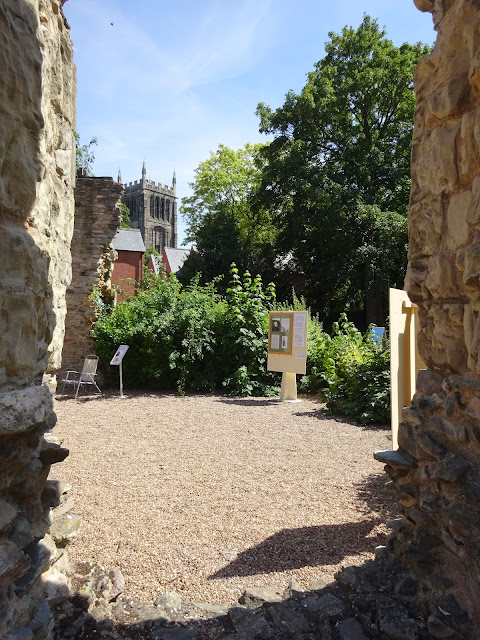Over the past couple of weeks on the blog, we’ve been looking at the life of the Reverend James Bickham, firstly a bit about his family history and his work, and then about the library he bequeathed to the subsequent Rectors of Loughborough. This week, let’s have a quick look at where he lived in Loughborough.
The building
we now know as the Old Rectory was once home to the Rectors of Loughborough,
and during its existence has been altered dramatically, firstly to extend it,
and then to almost completely demolish it! Reverend Bickham lived there when it
was a building of a fairly modest size, but clearly big enough to hold his
library, until after his death when it was transferred to the parish church! The land in which it was situated, however, was quite extensive, and
certainly extended along Toothill Road, and up Meadow Lane.
Here’s what I wrote about the Old Rectory in ‘Loughborough in 50 buildings’:
“When William John Lyon, Rector of Loughborough from 1934-1958, moved from Loughborough to Brent Pelham, his successor, Ronald Albert Jones, made the decision not to live in the grand Old Rectory, preferring to live in a smaller new-build, the ‘new rectory’, nestled between the Old Rectory and the Church of All Saints. When the Town Corporation announced they intended to build homes for the elderly on the land surrounding the Old Rectory, the fate of this old building hung in the balance.
The Old Rectory is the oldest of the few remaining stone-built edifices in Loughborough. Although Loughborough had a rector as early as 1193, the earliest written record of the Old Rectory is from 1228, at which time it was owned by the Cortlinstoke family, before being acquired by the church.
By the late Middle Ages, the prosperous merchant town of Loughborough provided a substantial residence for its rector and church officials. The grounds contained three barns, stables and pigsties. Pictorial evidence of the Old Rectory is seen in Nichols’ ‘History and antiquities of Leicestershire’ in which the building is presented with four gable ends which face the church, although the artist has not been wholly accurate in the portrayal.
Leicestershire architect, Christopher Staveley, undertook repairs and improvements to the building around 1800. In 1826 the inside of the building and its roof were [apparently] destroyed by fire, following which a new frontage, facing onto Rectory Place, was added. During the Victorian period, the extensive gardens were used for fetes and other fund-raising events.
Reaching the end of its life as a home for the local rector, the rectory was saved from complete demolition when the Loughborough Archaeological Society investigated and recorded as much of the building’s history as they could establish. By 1967 the majority of the building had been demolished but the mediaeval core was saved and restored, and now houses a collection of local artefacts, including the cross from the top of Warner School, and an annually changing exhibition.”
The Old Rectory Museum is usually open during the season from early April to the end of October, every Saturday, from 11am to 3pm, provided there are sufficient volunteers to do this. Over the years, there have been various exhibitions held within, and several art exhibitions, as well as the building being used to host events, and things like writing workshops. The Museum is run by the Loughborough Archaeological and Historical Society, who also host talks, often in Fearon Hall, although the annual Ian Keil Lecture is often held in the parish church. You can find out more about the LAHS and the ORM from their Facebook pages, or from their website.
____________________________________
posted by lynneaboutloughborough
With apologies for typos which are all mine!
_______________________________________________
Thank you for reading this blog. You are welcome to quote passages from any of my posts, with appropriate credit. The correct citation for this looks as follows:
Lynne






No comments:
Post a Comment
If you have found this post interesting or have any questions about any of the information in it do please leave a comment below. In order to answer your question, I must publish your query here, and then respond to it here. If your information is private or sensitive, and you don't wish to have it on public display, it might be a better idea to email me using the address which is on the About Me page, using the usual substitutions: if you take the email route, our conversation remains private, and is not published on the blog. Thanks for reading the blog.